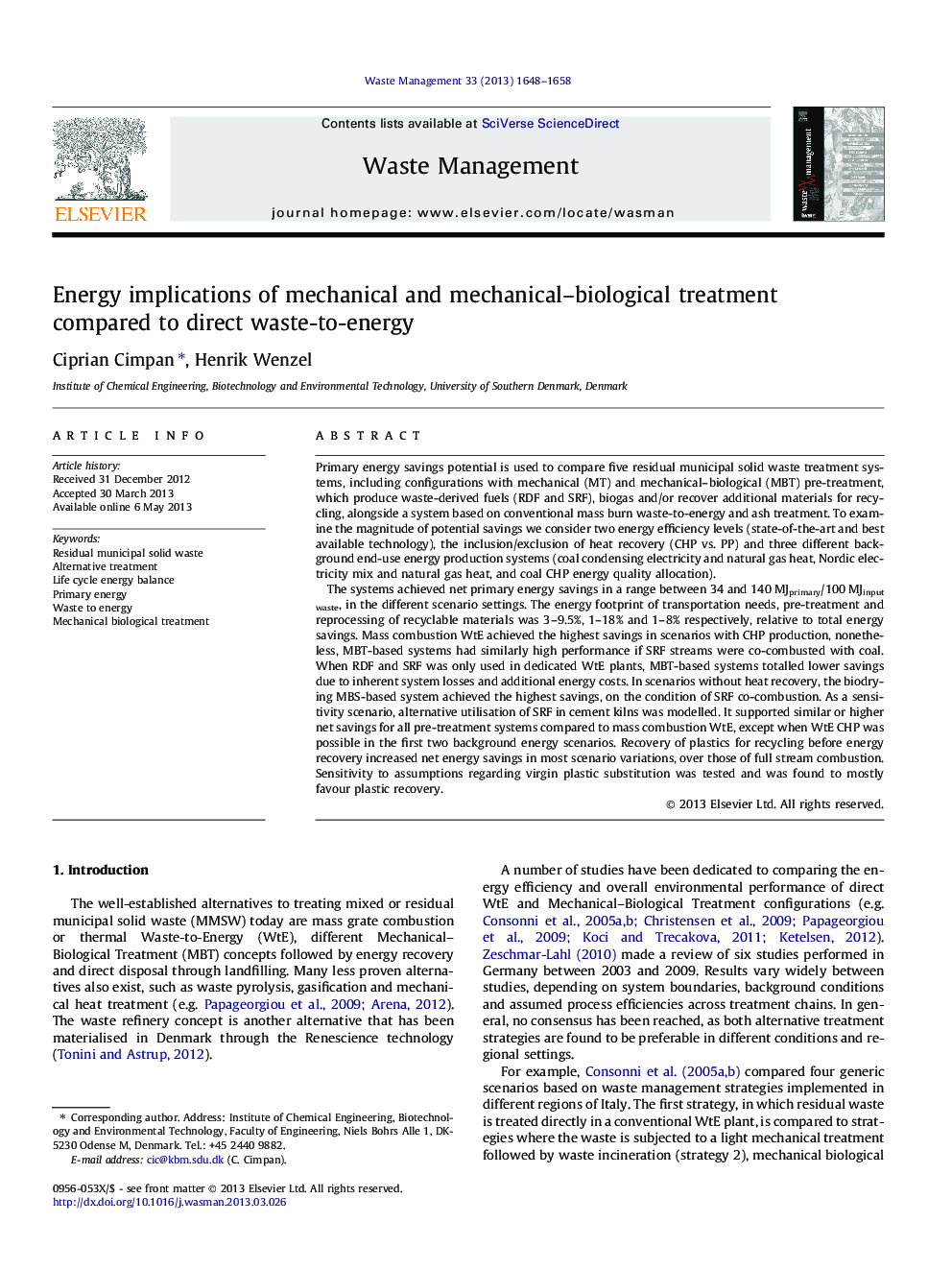| کد مقاله | کد نشریه | سال انتشار | مقاله انگلیسی | نسخه تمام متن |
|---|---|---|---|---|
| 4471963 | 1315050 | 2013 | 11 صفحه PDF | دانلود رایگان |

• Compared systems achieve primary energy savings between 34 and 140 MJprimary/100 MJinput waste.
• Savings magnitude is foremost determined by chosen primary energy and materials production.
• Energy consumption and process losses can be upset by increased technology efficiency.
• Material recovery accounts for significant shares of primary energy savings.
• Direct waste-to-energy is highly efficient if cogeneration (CHP) is possible.
Primary energy savings potential is used to compare five residual municipal solid waste treatment systems, including configurations with mechanical (MT) and mechanical–biological (MBT) pre-treatment, which produce waste-derived fuels (RDF and SRF), biogas and/or recover additional materials for recycling, alongside a system based on conventional mass burn waste-to-energy and ash treatment. To examine the magnitude of potential savings we consider two energy efficiency levels (state-of-the-art and best available technology), the inclusion/exclusion of heat recovery (CHP vs. PP) and three different background end-use energy production systems (coal condensing electricity and natural gas heat, Nordic electricity mix and natural gas heat, and coal CHP energy quality allocation).The systems achieved net primary energy savings in a range between 34 and 140 MJprimary/100 MJinput waste, in the different scenario settings. The energy footprint of transportation needs, pre-treatment and reprocessing of recyclable materials was 3–9.5%, 1–18% and 1–8% respectively, relative to total energy savings. Mass combustion WtE achieved the highest savings in scenarios with CHP production, nonetheless, MBT-based systems had similarly high performance if SRF streams were co-combusted with coal. When RDF and SRF was only used in dedicated WtE plants, MBT-based systems totalled lower savings due to inherent system losses and additional energy costs. In scenarios without heat recovery, the biodrying MBS-based system achieved the highest savings, on the condition of SRF co-combustion. As a sensitivity scenario, alternative utilisation of SRF in cement kilns was modelled. It supported similar or higher net savings for all pre-treatment systems compared to mass combustion WtE, except when WtE CHP was possible in the first two background energy scenarios. Recovery of plastics for recycling before energy recovery increased net energy savings in most scenario variations, over those of full stream combustion. Sensitivity to assumptions regarding virgin plastic substitution was tested and was found to mostly favour plastic recovery.
Journal: Waste Management - Volume 33, Issue 7, July 2013, Pages 1648–1658